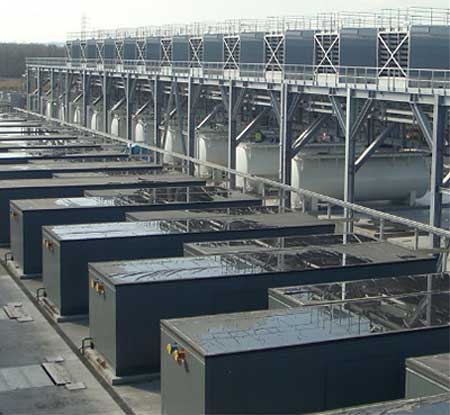
The Google data center in Belgium, which features no chillers and routes traffic to other facilities during hot spells. (Photo from Google)
When Google built a data center without any chillers, it was entering uncharted territory. Chillers, which are used to refrigerate water, are widely used in data center cooling systems but require a large amount of electricity to operate. By building in a cool location - in this case, St. Ghislain, Belgium - Google expected to reduce its energy bill without the risk of hot weather interrupting its chiller-less operations.
How did it work out? The Belgium facility has become Google's best performing data center on the leading energy efficiency metric, with a Power Usage Effectiveness (PUE) rating of 1.09 for the first quarter of 2011, and a 12-month average of 1.11. That performance helped Google’s network of 10 company-operated record a collective PUE of 1.16 in the first quarter, the best showing in the four years in which Google has tracked its data centers. The PUE metric compares a facility’s total power usage to the amount of power used by the IT equipment.
Free Cooling a Key Strategy
With the growing focus on power costs, many data centers are reducing their reliance on chillers to improve the energy efficiency of their facilities. This has boosted adoption of “free cooling,” the practice of taking advantage of cool outside temperatures to support the cooling systems. This approach allows data centers to use outside air to either cool water or provide direct air cooling for servers.
Google opted to use a water-side economization system in place of chillers and refrigeration systems. Other companies have used air-side economization, including the Microsoft data center in Dublin, Ireland.
Microsoft's Dublin site uses rooftop air handlers that take in outside air and draw it into the data center for use in the air conditioning system. The building was designed to use direct expansion (DX) cooling will be used in lieu of chillers on unusually warm days.
But that will soon change. "We didn't use the DX cooling at all in the first year of operations," said Dileep Bhandarkar, Chief Architect for Microsoft Global Foundation Services. "So we'll be going without DX coolers in the second phase of the data center."
Will more companies be going chiller-less in the data center? Stay tuned for future coverage of additional companies pursuing this design model.




